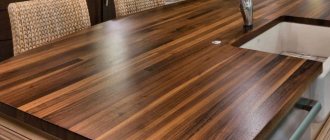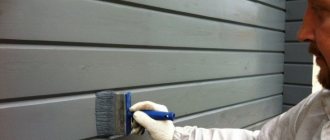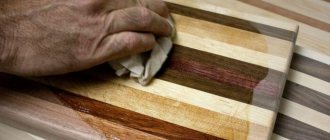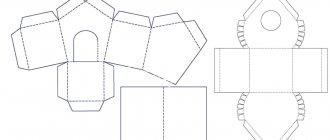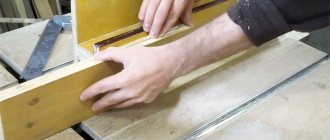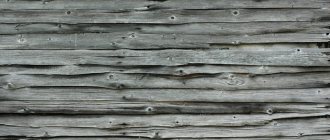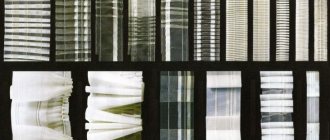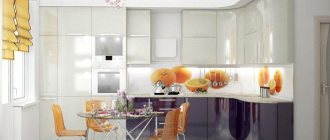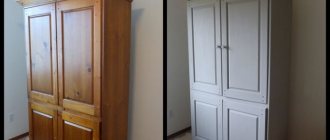How to choose and use an electric planer correctly
An electric plane is an essential tool for anyone who deals with wood processing, and during construction or renovation it can become an indispensable assistant.
In everyday life, a traditional hand plane is usually enough for a home craftsman, but in a private farmstead or summer cottage there is plenty of woodworking. Baths, outbuildings, fences, benches and other furniture - the list goes on and on. An electric planer will save the craftsman a lot of time and effort and allow him to achieve good results. Using an electric planer, workpieces are brought to the required dimensions, surfaces are leveled, nicks, burrs and knots are removed, edges are cut, and grooves are selected. A plane, of course, is not capable of “fine” processing of surfaces to perfect smoothness; this will require additional tools. But with its main task - rough processing of wood in large volumes - the electric planer, if the operating rules are followed, copes “excellently”.
As when choosing any power tool, when choosing an electric planer, a master should start from the main tasks in which the tool will be most often involved. An important role is played by the power of the tool, which is directly related to its performance. A plane of greater power plans “deeper”, that is, it can remove a thicker layer of wood in one pass. Manual electric planers are produced with a power ranging from 0.5 to 2.2 kW. Above one and a half kilowatts is, in fact, a professional tool for large-scale work. If you plan to use the plane frequently and in large volumes, it makes sense to take a closer look at more powerful models. But, as always, the rule applies: the more powerful the tool, the more it weighs and the higher its price. It will be convenient to work with a low-power plane while suspended. Medium power models weigh between 2.5-4 kg.
Another indicator is the rotation frequency of the drum, that is, the number of revolutions it makes per unit of time. This value is very important to consider when choosing a plane, says FORUMHOUSE wind1wind: the higher the number of revolutions, the better the quality of the cut. The optimal option that you should focus on when choosing is 15000-16000 rpm.
wind1wind:
– The plane does not create a completely flat surface, but a “wave” with very fine steps. To make this waviness invisible, the number of shaft revolutions and the number of knives on the shaft are increased. These two parameters are very important when choosing.
width depends on the width of the cutting edge of the knives. The most popular knife sizes for household electric planers are 82, 102 and 110 mm. The higher the planing width, the fewer passes will need to be made to completely process the surface.
To simply process a board to a smooth surface, all you need is a plane with knives narrower than the board. But if the width of the knife does not cover the width of the material being processed, you will not get a perfectly flat surface - even a minimal “step” will remain.
The depth of cut is essentially the thickness of the layer of wood removed by the plane in one pass. In household planes it usually does not exceed 2 mm, in more powerful ones - 4 mm. Most models have depth adjustment.
Electric planers use removable blades made of carbide and hardened steel. Most of them, even carbide ones, can be sharpened and sharpened, but narrow knives cannot be sharpened: their design does not imply sharpening. Some models of planes are supplied with a sharpening device. You can make it yourself.
Olegych:
– To straighten knives you need thicker glass and a couple of sheets of good sandpaper. We soak the paper in water, place it on the glass - and off we go! But this is exclusively for straightening, knives “stuck” on nails and bricks - only for use on the machine.
The sole of the plane in contact with the surface being processed must be flat and smooth. In modern models of planes, barely noticeable grooves are made on its surface - grooves that prevent the formation of an “air cushion” between the sole and the material during operation and thus ensure uniformity of the cut. The grooves on the front of the sole are designed for chamfering the corners of parts. When choosing a plane, you should pay close attention to the quality of the surface of the sole, especially if we are talking about inexpensive models.
Blackk:
– A defect found in non-brand planes is the so-called “drunk sole”. We check this way: set the removal adjustment to zero, move the knife to the upper position. We apply a ruler along the length of the plane, alternately on both sides, so that it lies on both platforms at once. There should be no gaps between the ruler and the sole.
When choosing an electric planer, it is important to hold the tool in your hands, to understand whether the tool’s handles, start and adjustment buttons are conveniently located for you, and whether its weight suits you. Modern electric planers have many additional options and parameters that facilitate and improve the work process. But all of them, of course, increase the cost of the instrument. Among the most popular options are directional ejection of chips with the ability to connect a bag for collecting them or a vacuum cleaner, a “soft start” system and speed control. Here everything depends on the requests of the master and his financial capabilities.
A useful accessory is a universal ruler that allows you to evenly process a surface wider than the planing width of the plane in one pass, as well as planing at an angle of 90 degrees to the supporting surface. Often such rulers are included with the plane, but if not, it makes sense to purchase it separately.
The basic work performed by an electric planer is easy for a beginner to master, and if you follow simple rules, the tool will serve for a long time and effectively. Planing should begin only after the drum of the switched-on plane has reached full speed. And you shouldn’t immediately set the maximum planing depth: it’s better to remove a millimeter twice than to try to remove two millimeters at a time. There is no need to put any force on the tool: it should only be guided, and the plane should plan itself, “like clockwork.” And for this, the knives must be sharp.
It is not so easy for craftsmen starting to work with an electric planer to determine when sharpening or replacing the knife is necessary. Forum member Nomad advises using visual methods. If the knives are sharp, the surface will be smooth. If they are dull, rags of wood form on it, since the knives no longer cut, but tear it. Another sign of dull knives is wood that turns brown from high temperatures, especially in the area of knots.
Aleksej2000:
– Even with dull knives, the plane begins to vibrate on the knots, as if bouncing up and down: the knife does not cut and is pushed away from the dense material. The best thing is to install new knives and see how they work. And then the feeling of sharp knives will be familiar. And with the same sharp knives, try to walk along a knot to see the difference.
A common problem that novice craftsmen face is the displacement of the material being processed under the plane. Although a plane is one of the safest tools, there is still a risk of injury when holding wood with your hand. The problem can be solved by making a simple board clamp and limiting the lateral displacement of the plane - as forum user wind1wind advises:
– Along the width of the sole of the plane on the workbench, attach two blocks no less long than the boards being processed. The sole of the plane should pass between them with a minimum gap, but without difficulty. A piece of slats is attached to one end, against which the board will rest. Additionally, the board between the blocks can be fixed with a wooden wedge.
For this design to work as it should, the end stop made of slats and wedges should be slightly thinner than the board being planed, a forum member advises. The blocks should, on the contrary, be thicker than the board being processed by about 1/2-2/3 of the thickness of the plane sole. Then they will prevent the lateral movement of the plane during operation. On the other hand, the plane will not touch the blocks with protruding parts of its structure (belt casing, engine).
Read also: GOST marking of electrical circuits
Forum users discuss the features of choosing electric planers, the advantages and disadvantages of specific models in this thread. Here you can read recommendations and get advice on how to properly operate an electric planer. Members of the forum exchange their experience in replacing, sharpening and straightening planer knives in this thread. Find information about the repair of planes, routers and circular saws here. This video explains the basics of working with an electric planer.
There are many planes and planing machines available for planing boards. However, if the board is quite wide, more than 200mm, then planing it evenly, on a plane, is quite problematic, since one side of the board is convex and the other has curved edges.
In this case, it is better to use different planing techniques. The first way is to walk, not with a wide electric planer, over protruding places. This is done in order to plan evenly and prevent the plane of the board from skewing towards one of its edges.
In this case, when planing protruding edges, it is necessary to remove the thickness of the planing with a small amount of removal, and go through the same number of times on one and the other side. Finally, we plan the board on a wide planer. If there is no planer, then special knives with rounded ends are installed on the electric planer so that there is a protrusion between narrow passages, since the width of the plane when planing is less than the board.
If you have a large machine, then in order to avoid distortions when planing an uneven board that is convex on one side, shavings are poured onto the bed, after which the board is ground in and lies flat when planing. This simplest technique allows you to avoid distortion when planing.
You should not neglect the clamping device that many planing machines are equipped with, since they not only press the board, but also press it evenly. When achieving a smooth surface of the board, the main thing is well-sharpened and adjusted knives, plus a thin layer of planing.
If your planer is narrower than the board being processed, then you should plan the board in one pass, first on one side, then on the other. Thus. You will achieve a flat surface on a wide board.
Hello, readers of the blog “build a house”. Almost all mechanical and electrical tools require proper handling and timely adjustment. We have already discussed how to properly set up a mechanical plane in our previous article on. Today I propose to consider the issue of planing with an electric planer
. At the end you will learn how to work with this tool.
Attention: To prevent sawdust and shavings from clogging the plane blade, use special bags to collect the shavings.
An electric planer can be used to chamfer a part.
. Based on the width of the required chamfer, run the plane along the edge of the workpiece the required number of times.
Included with electric planer
When installing a separate side stop on the electric planer (it is usually supplied as a kit), you can make. The stop, fixing the tool at a certain distance, must touch the workpiece.
Important: If the surface being processed with a plane is uneven, it means you are using dull knives or have released them incorrectly (see at the beginning of the article).
Folding depth
depends on the number of passes with the plane over the workpiece. The more passes, the deeper the rebate.
After planing, remove the knives from the electric planer, wash them with kerosene and place them in a separate box until next time.
Self-drying
If you wish, you can dry the boards to the required moisture level on your own, but this takes time. Before the desired humidity is reached, the wood is kept in the chamber for up to 2 weeks, while it is important to adjust the temperature, and the quality of the process is influenced by a large number of parameters. In natural conditions you will need to expect much more, plus everything will depend on humidity, ventilation levels and temperature conditions. This may take more than one month. Massiveness will slow down the process even more.
By drying the boards on your own, you will also get distortions in the geometry, and the entire defect will be yours.
Video: working with an electric planer
With this, we can finish this article about how to plan correctly with an electric planer. And in the next article we will look at the methods. Which is also quite important when working with wood. Bye everyone, until new articles.
Best regards, Vadim!
Even if the farm has an electric planer or a whole machine for processing wood, it is hardly possible to do without touching some small elements with an ordinary hand plane
. Agree, it would hardly be reasonable to turn on the whole machine in order to process a small one. For this reason, every master should have such a tool.
Not everyone knows how to plan with a plane correctly. I even met labor teachers who taught children incorrectly. The teacher planed the workpiece against the grain, which is fundamentally wrong. This forced me to write this article.
Moisture protection
If the importance of lumber exceeds 15%, then the wood begins to deteriorate at the structural level: it swells, delaminates and shrinks, the shape of the product is deformed, cracks and gaps form. To prevent this from happening, the building material should be treated with special means to protect it from moisture.
There are two types of such solutions on the market:
To prevent this from happening, the building material should be treated with special means to protect it from moisture. There are two types of such solutions on the market:
The first type provides a long-term effect of hydrophobization (reducing the ability of wood to absorb moisture). But the treatment process with the second group of drugs should be repeated periodically.
Oil impregnations and those based on alkyd resins are most often used. They are applied with a brush or roller. But deep impregnation with a water-repellent composition has a more durable effect. This procedure is carried out in baths or autoclaves directly at the construction site. True, this method is more expensive, but it is much more effective.
Correct fastening of the product
First, you should secure the product that needs to be processed.
Attention! It is unlikely that a real master will plan on his knees. Think about it.
It is better to use a carpentry workbench for this, in which the product will press into a special protrusion located below the workpiece - this way nothing will interfere with the work. The product is first carefully clamped in a vice.
In the absence of a workbench, you can use some kind of table where you could build a stop with a triangular cutout. This is the cutout where the workpiece will be inserted. The back of the block or slats can be pressed against the tabletop with a clamp. If this is not possible, then several small nails are nailed at the ends, driven at the required angle. By the way, you can find excellent material for your new wood products at https://doska-strogannaja.ru/.
Attention! Planing short products is extremely inconvenient, especially their ends. For this reason, if you plan to complete several small elements, then it is advisable to first make one large workpiece, and only then divide it into the required sections.
How to plan with a plane correctly?
And now a few words about the mentioned direction of fibers or “wool”, as it is also called. Be sure to move only in the direction of the fibers. If you do this “against the grain,” you may end up causing bullying. Although in fairness it is worth noting that often (especially for wide boards, etc.) the fibers are directed in different directions - that is, from one to one, and from the other to the other (sorry for the tautology). Moreover, sometimes it is difficult to even determine where exactly the fibers are directed, although this can be clearly felt directly during the planing process. In one direction the tool will produce small thin chips, in the other it will become scuffed. In such cases, it is better to turn the workpiece around and move from the opposite end.
Attention! It is easier for a left-handed person to plan if he is on the right side of the workpiece, for a right-handed person - if he is on the left.
We process wood: what do you need to know?
Before processing lumber, you need to determine the direction in which you will plan. Usually planed in the direction of the wood grain. If the lumber is made from several boards, then you need to plan it diagonally.
To prevent the edge of the board from becoming uneven, you need to use a corner stop, which is attached to the base of the electric planer on the side and perpendicular to its axis.
When you have finished planing the wide board, you will need to align the boundaries between the passes. This stage is called scraping. For this, a special grinder is used, which will remove all roughness.
Because You are not logged in. To come in.
Because The topic is archived.
For household needs, it is necessary to put together a certain number of wooden products from 50 pieces. Raw, unplaned is suitable for everyone except the risk of injury. Is it easier to rough grind?
Grinder with petal disc? Belt sander? Or bother with an electric planer? ¶
I did it with a belt sander. In 2 hours, 20 square meters of floor are of acceptable quality. Even very acceptable. Without knowing it, you wouldn’t think that there was just a figurative board. It took 5-7 tapes. I rented the car for the evening.
I did it all around with a grinder too. Rack - workbench. About 3 m with a width of 0.5 m. Longer and harder. But the result is worthy. ¶
An electric planer is faster. Any grinder will take longer. But the planer is damp, so it won’t pick up a damp board, and the exhaust gets clogged. Yes, and sanders don’t sand raw wood, they make a mess. If you don’t have much and don’t have a plane, then a grinder with a blade.
Well, if the board is sawn not with a disk, but with a ribbon and all in waves, then it will take longer to do it with a plane than with a sander. He cuts off the top of the wave and leaves the bottom. By the time you walk about 4 times, you could have done it with a petal if you don’t need evenness.
Interskol is a pretty decent plane, compared to other cheap ones. I didn't like him until he died. I bought a bison and I understand what a cool interskol it was. I should have taken a Makita, I was greedy
How to hold a plane
The plane must be held with both hands at once, the tool pressed slightly and moved along the product parallel to the edge from one edge to the other. Although if the plane is small and light, then it can be held with one hand. In the case of the wide board described above, it is necessary to make a couple of parallel passes, in which one strip will be next to the other. If the board is long, then it is preferable to plan it in sections, smoothly moving forward.
I hope now you know how to plane properly
. If you have any questions, you can leave them in the comments to this article.
How to properly knit foundation reinforcement, fixture
How to choose the right apartment in a new building
The process of sharpening a board requires responsibility, care and precision.
In this material we will talk about how to plan a wide board, and in general about the planing process. Its main task is to obtain a perfectly flat plane without height differences. This stage is also preparatory to the aesthetic treatment of wood. Only after sharpening can you polish the board and cover it with special decorating compounds or varnish. There are several ways to perform this procedure, and the following table will give you a rough description of these processes.
Using a plane
Manual method, which requires large labor costs. As a rule, it allows you to process surfaces that are not too wide and does not give an ideal result. Requires planer skills.
Using an electric planer
Also a manual method, but less expensive than in the first case. At the same time, there are models of electric planers that allow you to work with boards of impressive width.
Using a surface planer
Thicknesser is a compact planing machine that can be used in domestic conditions. Allows you to achieve the highest quality results, but does not provide large volumes of work.
Using a planer
A professional way that allows you to work with a wide range of material sizes. In addition, it provides almost perfect results.
Leveling a wooden floor with a cement screed
Experienced experts are of the opinion that if the wooden floor is strong enough or was initially laid for subsequent leveling, a cement floor screed can be used.
This method will make a rough surface with large differences almost perfectly flat.
In order to level an old wooden floor with cement, you must:
- the surface of the wooden floor is covered with a waterproofing compound
- After the layer has dried, lay polyethylene film or roofing felt. It would be correct to do this with an overlap
- a new surface is measured with a level
- beacons are laid out
- Next, prepare the cement mixture
In this case, leveling will not be difficult: cement mortar is applied to the beacons, then leveling is carried out towards the door using metal slats.
The subsequent layer of self-leveling mixture will be applied easily.
However, there is a risk of breaking the base boards with the heavy cement mixture. In this case, you will have to remove the coating and re-fill the floor. Next, use layers of foam or expanded clay.
How to plan a board with an electric planer
An electric planer is a tool that greatly simplifies the sharpening process.
Let's move on to how to plan a wide board with an electric planer. This task is not an easy one, although of course it is easier than working with an ordinary hand plane. The fact is that the uniformity of the edge depends on you, which is regulated by the force of pressure on the device. In this case, the force must be exerted with a constant, identical force. Otherwise, the surface you are planing will turn out to be non-uniform. This is especially true for wide boards, where you need to go through several lines with a plane. The first run is an adjustment run; it will set the surface removal depth for all other runs. Now let’s talk about how to plan boards correctly with an electric planer. As we have already said, uniform pressure on the surface and consistency of the applied effort are very important. In addition, it is important to guide the plane along a straight path, without moving to the side. Preliminary markings or a laser level can help with this. Well, it is also very important to position the board correctly. It should lie on a perfectly flat surface, then the result will be maximum. By the way, there is a more advanced version of the electric planer - a surface planer, with its help the process of controlling the evenness of the edge becomes simpler.
Read also: Connect an audio system to a Samsung TV
An electric plane is an essential tool for anyone who deals with wood processing, and during construction or renovation it can become an indispensable assistant. In everyday life, a traditional hand plane is usually enough for a home craftsman, but in a private farmstead or summer cottage there is plenty of woodworking. Baths, outbuildings, fences, benches and other furniture - the list goes on and on.
An electric planer will save the craftsman a lot of time and effort and allow him to achieve good results. Using an electric planer, workpieces are brought to the required dimensions, surfaces are leveled, nicks, burrs and knots are removed, edges are cut, and grooves are selected. A plane, of course, is not capable of “fine” processing of surfaces to perfect smoothness; this will require additional tools. But with its main task - rough processing of wood in large volumes - the electric planer, if the operating rules are followed, copes “excellently”.
As when choosing any power tool, when choosing an electric planer, a master should start from the main tasks in which the tool will be most often involved. An important role is played by the power of the tool, which is directly related to its performance. A plane of greater power plans “deeper”, that is, it can remove a thicker layer of wood in one pass. Manual electric planers are produced with a power ranging from 0.5 to 2.2 kW. Above one and a half kilowatts is, in fact, a professional tool for large-scale work. If you plan to use the plane frequently and in large volumes, it makes sense to take a closer look at more powerful models. But, as always, the rule applies: the more powerful the tool, the more it weighs and the higher its price. It will be convenient to work with a low-power plane while suspended. Medium power models weigh between 2.5-4 kg.
Another indicator is the rotation frequency of the drum, that is, the number of revolutions it makes per unit of time. This value is very important to consider when choosing a plane, says user wind1wind
: the higher the speed, the better the quality of the cut. The optimal option that you should focus on when choosing is 15000-16000 rpm.
– The plane does not create a completely flat surface, but a “wave” with very fine steps. To make this waviness invisible, the number of shaft revolutions and the number of knives on the shaft are increased. These two parameters are very important when choosing.
Width
planing depends on the width of the cutting edge of the knives. The most popular knife sizes for household electric planers are 82, 102 and 110 mm. The higher the planing width, the fewer passes will need to be made to completely process the surface.
To simply process a board to a smooth surface, all you need is a plane with knives narrower than the board. But if the width of the knife does not cover the width of the material being processed, you will not get a perfectly flat surface - even a minimal “step” will remain.
Depth
cut is essentially the thickness of the layer of wood removed by a plane in one pass. In household planes it usually does not exceed 2 mm, in more powerful ones - 4 mm. Most models have depth adjustment.
Electric planers use removable blades made of carbide and hardened steel. Most of them, even carbide ones, can be sharpened and sharpened, but narrow knives cannot be sharpened: their design does not imply sharpening. Some models of planes are supplied with a sharpening device. You can make it yourself.
– To straighten knives you need thicker glass and a couple of sheets of good sandpaper. We soak the paper in water, place it on the glass - and off we go! But this is exclusively for straightening, knives “stuck” on nails and bricks - only for use on the machine.
Sole
The plane in contact with the surface being treated must be level and smooth. In modern models of planes, barely noticeable grooves are made on its surface - grooves that prevent the formation of an “air cushion” between the sole and the material during operation and thus ensure uniformity of the cut. The grooves on the front of the sole are designed for chamfering the corners of parts. When choosing a plane, you should pay close attention to the quality of the surface of the sole, especially if we are talking about inexpensive models.
– A defect found in non-brand planes is the so-called “drunk sole”. We check this way: set the removal adjustment to zero, move the knife to the upper position. We apply a ruler along the length of the plane, alternately on both sides, so that it lies on both platforms at once. There should be no gaps between the ruler and the sole.
When choosing an electric planer, it is important to hold the tool in your hands, to understand whether the tool’s handles, start and adjustment buttons are conveniently located for you, and whether its weight suits you. Modern electric planers have many additional options and parameters that facilitate and improve the work process. But all of them, of course, increase the cost of the instrument. Among the most popular options are directional ejection of chips with the ability to connect a bag for collecting them or a vacuum cleaner, a “soft start” system and speed control. Here everything depends on the requests of the master and his financial capabilities.
A useful accessory is a universal ruler that allows you to evenly process a surface wider than the planing width of the plane in one pass, as well as planing at an angle of 90 degrees to the supporting surface. Often such rulers are included with the plane, but if not, it makes sense to purchase it separately.
The basic work performed by an electric planer is easy for a beginner to master, and if you follow simple rules, the tool will serve for a long time and effectively. Planing should begin only after the drum of the switched-on plane has reached full speed. And you shouldn’t immediately set the maximum planing depth: it’s better to remove a millimeter twice than to try to remove two millimeters at a time. There is no need to put any force on the tool: it should only be guided, and the plane should plan itself, “like clockwork.” And for this, the knives must be sharp.
It is not so easy for craftsmen starting to work with an electric planer to determine when sharpening or replacing the knife is necessary. Forum member Nomad
advises using visual methods. If the knives are sharp, the surface will be smooth. If they are dull, rags of wood form on it, since the knives no longer cut, but tear it. Another sign of dull knives is wood that turns brown from high temperatures, especially in the area of knots.
– Even with dull knives, the plane begins to vibrate on the knots, as if bouncing up and down: the knife does not cut and is pushed away from the dense material. The best thing is to install new knives and see how they work. And then the feeling of sharp knives will be familiar. And with the same sharp knives, try to walk along a knot to see the difference.
A common problem that novice craftsmen face is the displacement of the material being processed under the plane. Although a plane is one of the safest tools, there is still a risk of injury when holding wood with your hand. The problem can be solved by making a simple board clamp and limiting the lateral displacement of the plane - as forum user wind1wind advises:
– Along the width of the sole of the plane on the workbench, attach two blocks no less long than the boards being processed. The sole of the plane should pass between them with a minimum gap, but without difficulty. A piece of slats is attached to one end, against which the board will rest. Additionally, the board between the blocks can be fixed with a wooden wedge.
Read also: How to reduce the Mercury 201 electricity meter readings
For this design to work as it should, the end stop made of slats and wedges should be slightly thinner than the board being planed, a forum member advises. The blocks should, on the contrary, be thicker than the board being processed by about 1/2-2/3 of the thickness of the plane sole. Then they will prevent the lateral movement of the plane during operation. On the other hand, the plane will not touch the blocks with protruding parts of its structure (belt casing, engine).
Members of the forum discuss the features of choosing electric planers, the advantages and disadvantages of specific models in. You can read the recommendations and get advice on how to properly operate an electric planer. Members of the forum exchange experience in replacing, sharpening and straightening knives for planes. Look for information on the repair of planes, routers and circular saws. This video explains the basics of working with an electric planer.
Many beginners are interested in the question of how to work with an electric planer. At first glance, there is nothing complicated: plug it into a power outlet, press a button, move it back and forth across the surface, removing chips. However, during the first attempts, the result is not always impressive.
When purchasing a tool, you need to check its functionality, completeness and appearance. It is worth paying attention to the sharpening quality of the installed knives. If the kit contains spare knives, you need to check them too. The cutting edge should be smooth, sharp, without gouges or bends. All other settings should be checked at home in accordance with the manufacturer's instructions.
Main advantages
The main advantages of an electric planer:
- High speed;
- Simplification of many technological operations (cutting a quarter, for example) due to the presence in the design of the plane of an angular stop, a side limiter and an adjustable processing depth;
- As a result, increased productivity;
- When working, precisely controlled physical efforts are not required, as in the case of using a conventional plane;
- Additional elements can expand the functionality of the plane.
Criterias of choice
The choice of a specific electric planer model is made based on an analysis of the following indicators:
- Rotation frequency. Must be at least 10,000 rpm. The presence of control electronics that maintains a stable rotation speed under load is welcome.
- Power. The higher, the easier the work and the higher the electricity consumption.
- Planing width.
- Planing depth and its adjustment mechanism.
- Tool weight;
- Heating intensity;
- Availability of a dust collector;
- Condition of the sole (flatness);
- Availability of spare parts (knives and belts) for this model on the market.
Features of work
The technology for working with an electric planer is quite simple. To begin with, the processing depth is set. Typically, this is done using a special rotary knob. Keep in mind that even at zero depth, many models will remove chips, so we recommend looking at models with a minus depth setting.
The board being processed must be securely fastened. To do this, it is advisable to use a special workbench that does not allow play in either the horizontal or vertical plane. Otherwise, the plane may be torn out of the worker’s hands with unpredictable consequences, not to mention damage to the board being processed.
The board must be installed in such a way that it is possible to move freely along it from one edge to the other. All interior elements that impede the employee’s movement must be removed from the path.
The plane is always held with two hands and is started without contact with the surface being processed. The passage is carried out along the wood fibers.
When working, ensure that the plane is positioned so that its sole is parallel to the board. The pressure on the plane should be light and even at the back and front.
The plane is passed from edge to edge. It is not recommended to interrupt, as the uniformity of processing may be disrupted. To process a wide board, several successive passes are used with a shift in width (or a plane with wide knives is initially selected).
To create chamfers along the edges of the material being processed, the electric planer has special grooves on the sole.
Hello everybody! Let's talk about the electric planer today. If you use it correctly, you will ensure high quality of the treated surface and will not allow the tool to cause injury to you. So, in this article we will look at the question of how to properly use an electric plane.
80 types of electric planers at low prices. Click to see
Checking and adjusting the position of the front plate
All adjustments to the tool must be made in the off state. The plug must be unplugged from the socket, otherwise you can not only damage the electric planer, but also cause serious injury.
Table of main parameters of electric planers.
When checking the position of the knives, the front plate must be set to the minimum planing depth position using the standard adjustment knob. Place the electric planer on a flat, hard surface with the drum facing up.
To check, you can use a metal ruler or a piece of window glass of suitable dimensions. The drum with knives should be rotated until one of the knives is in the upper position, above the drum axis. The ruler or glass must be laid on the slabs along the plane. The surfaces must be in the same plane.
If the control device on any of the plates is tilted, you need to check the position of the front plate and adjust it. Such a defect occurs during long-term operation of the tool without maintenance. The internal cavities can become clogged with wood dust and small shavings. Excessive force on the depth adjustment handle displaces it from its original position.
To eliminate the defect, you need to remove the handle, the front plate, clean the cavities from dust and chips, and lubricate them. Place the plate in place, check the installation using a ruler, secure the handle, checking that the dial matches the index mark.
Adjusting the position of the cutting edge
Adjustment of the position of the knives is carried out according to two parameters:
- height of the cutting edge relative to the back plate;
- the size of the protruding part of the knife for planing quarters.
Layout of the drum with blades.
Having installed the ruler or glass, you need to rotate the drum, controlling the gap between the knife and the device at the edges of the slabs. The edge of the knife should lightly touch the tool without lifting it. If the knife clings to the device or does not reach it, the position must be adjusted.
Typically, knives are secured with a special wedge with expansion bolts. Using an 8 or 10 wrench, you need to screw the bolts into a wedge until the bolt moves freely. Then, using the installed eccentrics, align the height of the cutting edge with the device. Tighten (unscrew) the mounting bolts and check the position again. The desired result can be achieved after several repetitions of this operation.
At the same time as adjusting the height of the cutting edge, you need to control the protruding part of the quarter planing knife. The optimal size should be indicated in the manufacturer's instructions. On most models it is 1 mm. The size is set by moving the knife left or right along the axis of the drum. It is important to set the size correctly. It should be the same on all knives. This can be achieved by using a feeler gauge of a certain size or by measuring the distance with a caliper (a caliper with a protruding back) from the edge of the knife to the drum. After adjusting the first knife, you need to move on to the next ones. The operation for all knives is performed similarly. If a knife cannot be installed in the required position, you need to remove the wedge and check the eccentrics for integrity and free rotation.
The adjustment must be completed by checking the free rotation of the drum and the fastening of all knives.
Preparing for work
The tool can be used in two positions:
Plane sharpening angle diagram.
- stationary position: the electric planer is attached to a rigid, stable surface;
- portable: the tool is moved manually along the workpiece.
Many models come with special clamps and a bracket for the start button. In a stationary position, it is more convenient to process short-length lumber, which can be moved along the tool alone. It is advisable to process long workpieces with a portable electric planer.
The wood must be dried; raw lumber is poorly processed. The board must be firmly secured to a hard surface. The part should not sag under the weight of the plane and shift during operation in any direction. When processing side surfaces on a workbench, it is advisable to install them on special fastenings that protect them from bending and movement. In the area of rotation of the drum with knives there should be no metal elements (brackets, nails, screws) on the surface being processed or fastening elements. Hitting the metal will leave a gouge in the blades, and a protrusion will form on the surface being treated. The knives will have to be sharpened, removing a thick layer of metal, or replaced.
Safety regulations
Safety precautions are described in the broadest and most detailed way in each Operating Instruction. To this we can add some practical tips:
- it is important to remember that working knives will cut off anything that gets into them, be it the phalanx of a finger or wood;
- Hands should not be closer than 10-15 cm from the knives while working in any mode. When working in stationary (inverted) mode, you cannot hold the workpiece by passing your hand over the knives. It is safer to intercept the workpiece with your hands so that your fingers do not pass over the knives. This point is especially important when planing small, thin workpieces;
- When the switched-on electric planer enters the workpiece, it should be held firmly. On an untested workpiece, an electric planer may behave unpredictably - jerk, catching on a branch, thick protrusion, etc. and break out of your hands;
- You cannot work tired, in a painful state, with a reduced reaction, especially in a state of intoxication.
You can see how to work with an electric planer correctly by watching the video
How long can you use a plane without stopping?
Professional electric planers can work without interruption for many hours at rated load. Household ones are prone to rapid overheating, especially under heavy loads (hard wood, large planing depth) and in hot weather.
It is necessary to ensure that the cooling grille and impeller are not clogged with chips or dust.
A hot engine is not yet a reason to stop working; for most electric motors, a temperature of +50 - +60 C is the norm. Temperatures up to + 60C can be tolerated by the hand with a “very hot” feeling.
The signal to immediately stop is the specific smell of burning varnish from the winding or overheated plastic, which appears at + 80C and above.
Also, the bearings must not be allowed to overheat. The lubricant in them can melt, leak or lose its properties, which will then lead to rapid failure.
From the point of view of the human condition, you need to stop working and take a break as soon as significant fatigue appears.
How should it be placed on the workbench?
The plane is placed on any surface, wooden, iron, etc., only after the inertial rotation of the knives has completed. You can place the tool on the tree in any position, including with the knives down. It is advisable to put it on the iron sideways so that the knives do not become dull on the iron.
As a result, an electric planer is an effective tool for certain tasks. But it does not work on its own; it is guided by the hand of a master. Having acquired some skills and a practical understanding of the capabilities of this tool, any user receives satisfaction and benefit from working with this tool.
Surface treatment
An electric planer can perform three operations:
Scheme of options for sharpening a plane knife.
- chamfer at different angles;
- select quarters on blanks;
- plan surfaces.
The main purpose of the tool is to plan surfaces of various lengths and widths.
When working, the plane must be placed on the surface of the workpiece with the front plate so that the knives do not touch the surface. Press the start button, after picking up speed (the sound stops changing pitch) begin moving the plane along the surface. The tool must be held strictly parallel to the surface being processed, the movement must be uniform, without jerking or stopping. When starting to move, you need to increase the pressure on the front part, and when exiting the surface to the rear part. The plane should work smoothly, without vibration. If strong vibration occurs or the sound changes during operation, you need to turn off the tool, determine and eliminate the cause of the abnormal operation.
The depth of the passage must be set depending on the processing purposes. If you need to change the size of the workpiece, you can use the maximum size. When leveling the surface, it is advisable to work with a shallow processing depth, achieving the required quality in several passes.
Also, the depth of processing depends on the material. Hard rocks should be passed several times at shallow depths to avoid overloading the tool.
Leveling a wooden floor with a self-leveling mixture
Self-leveling floor on wood
It would be impractical to place a classic screed on a wooden floor. It has significant weight; the ceiling simply cannot support it. But you can use a self-leveling mixture, which is designed for finishing leveling. The maximum thickness of a layer of such a mixture does not exceed two centimeters, so if there is a greater difference in heights on your wooden floor, then there is no point in using such a mixture.
Technology for leveling wooden floors with a self-leveling mixture
- Clean and sand your wood flooring.
- Apply a primer coat to the surface. It is advisable to use compounds with deep penetration and protection from moisture.
- Lay a layer of waterproofing film on top of the wooden flooring. It is recommended to use dense strips and fasten the overlapping strips with double-sided tape.
- Check especially carefully for possible leaks. Secure a wooden strip in the doorway to prevent the mixture from spreading.
- Place a reinforcing mesh on the surface of the polyethylene, secure its position with staples or plastic clamps.
- Mix the self-leveling mixture in a container. Pour the dry mixture into the water in a thin stream, constantly stirring the mixture with an electric drill attachment.
- Apply the prepared mixture to the surface and smooth it using a spiked roller, expelling any trapped air bubbles from its thickness. When working with a roller, you need to wear specialized shoes, which are also equipped with spiked soles.
Processing with a spiked roller
- The drying time of the mixture depends on its composition. During ripening, its surface may need to be shed with water to prevent cracking. The room is not ventilated during this period.
Additional tool features
To remove chamfers, you need to use a special triangular groove cut out on the front plate of the plane.
The tool should be positioned with the groove at the angle to be processed, launched and moved along the part while maintaining the tilt. The first pass is made along the slot; subsequent passes, if necessary, are carried out in the usual manner.
To make quarters on a plane, you need to install an additional stop to limit movement away from the direction of movement. The second stop, limiting the depth of the quarter, is located on the side surface. The stops must be set to the required dimensions. The distance should be measured from the angle of the cutting edge of the knife in the upper position. The quarter selection is performed in several passes. If the vertical surface of the quarter turns out to be steps, it is necessary to increase the protrusion of the knives beyond the side surface of the plane.
A wide surface of lumber can be processed in several passes. Processing should begin from the left edge, setting the adjustment to the minimum depth. The next pass should be performed offset to the right by about a third of the length of the knives. In this way you need to go across the entire width of the workpiece. If the quality is unsatisfactory, repeat the surface treatment in a similar way.
